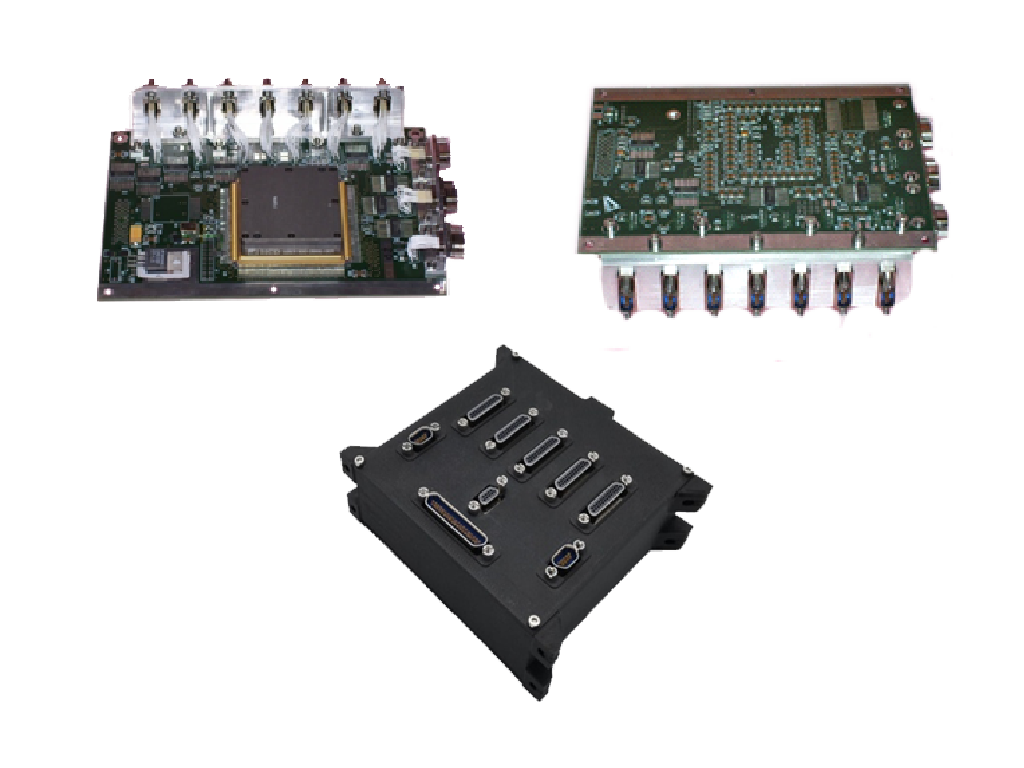SPACECRAFT AVIONICS
ARGO-2 High Performance Star Tracker System (HSTS-2)
ARGO2.0 is a very compact multi-camera Star Tracker System, comprising of up to three 4Mpixel resolution cameras and one compact electronic unit for their interconnection and data processing. The system has been conceived, as a reliable and accurate Star Tracker System for very small platforms, in particular also for CubeSat. The system is characterized by a high scalability, by offering different levels of accuracy and reliability, depending on the number of adopted cameras.
ARGO2.0 has been developed in the framework of an ESA Program, primed by EICAS, for which TSD has contributed by developing FPA and the Camera Electronics.
ARGO2.0 collects significant results obtained by TSD through the development of ARGO 1.0, but it required a complete re-design of the FPA and Camera Electronics, so to reach a further reduction of the SWAP (Size, Weight and Power) and costs and at the same time to keep the performance and the reliability as close as possible to the original architecture.
Thanks to a proprietary design, the focal plane is thermo-mechanically decoupled from the rest of the structure, thus guaranteeing a very stable positioning of the FPA with respect to the overall camera assembly.
ARGO2.0 can be configurated in a multicamera version with up to 3 Optical Heads in order to allow intelligent real-time data fusion of data coming from the cameras and allow smart in-flight relative camera attitude calibration.
The multicamera system can be interconnected by means of a Data Processing Unit (DPU), responsible to run the Data Fusion software.
Such DPU is a compact, lightweight unit based on last-generation mid-range density low-power consumption FPGA from the Microsemi PolarFire family.
The overall dimensions of the DPU are 95mmx94mmx22mm with a mass of ~250g
Its power consumption is about 3W @5VDC and embeds RS422 and SpaceWire I/F towards the Spacecraft and the Cameras.
The careful selection of materials and components, supported by specific radiation testing performed by TSD, allows the DPU to be tolerant to a TID >20Krads, and a good resistance to Single Events is guaranteed by implementing latch-up protection circuitry for the most sensitive parts.
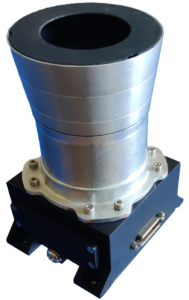
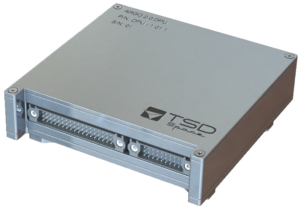
ARGO-1 High Performance Star Tracker System (HSTS-1)
ARGO is an innovative multi-camera Star Tracker System, comprising of up to five 4Mpixel resolution cameras and one router&power control unit for the data intercommunication and powering of the cameras. The system has been conceived as a reliable, highly accurate and low cost product. ARGO has been developed in the framework of a H2020 EIC SME Instrument Program, primed by EICAS, that has developed the algorithms and the upper level SW and with the contribution of TSD that has developed the camera and the router&power control unit and OPTEC that has developed the lens.
ARGO architecture is based on the concept of the Multi-Camera Attitude Determination System, representing a significant improvement with respect to the state-of-art mono or multi-head systems, frequently used today for Spacecraft Attitude Determination. With respect to such systems, ARGO improves attitude measurement accuracy, admissible working conditions and system robustness and autonomy, it simplifies hardware requirements and opens the way for gyroless and single sensor AOCS concepts.
The challenge of designing a Star Tracker System with high performances, strong reliability and at the same time affordable for limited-budget missions, has been overcome by identifying very original and effective architectural solutions and by adopting a mix of radiation hardening techniques, in particular RHBA (Radiation Hardening By Architecture), RHBD (Radiation Hardening By Design) and RHBP (Radiation Hardening By Process).
Integrated Space Navigation System
Over the last decades, different technologies have been adopted for spacecraft navigation. The integration of different metrology systems can certainly be more effective than using a single technology individually. This is true particularly in space applications that require considerable autonomy, precision, robustness, adaptability to several scenarios, for both relative and absolute navigation, such as missions of On-Orbit Servicing, or Formation Flying.
A synergistic integration of different sensors can overcome the individual limitations and provide a more accurate and robust navigation. In addition, a tight integration can minimize the final mass, volume and power consumption. VINAG (VISION/INS integrated Navigation Assisted by GNSS) is a highly integrated multisensor navigation unit, particularly conceived for On-Orbit Servicing missions. The system is designed to provide all-in-one, on-board real time autonomous absolute navigation as well as pose determination of an uncooperative known object orbiting in LEO (Low Earth Orbit), GEO (GEosynchronous Orbits) and possibly in HEO (Highly Earth Orbit).
VINAG has been developed in the framework of a technology development program, co-financed by the Italian Space Agency, primed by TSD and with the contribution of several universities (POLIMI, UNINA, UNICAL), the CIRA research center and the ST small enterprise. TSD has developed the entire HW platform, with the exception of the GNSS Receiver developed by ST and in particular the HW for the implementation of the vision-based navigation algorithms and the data fusion and the camera system.
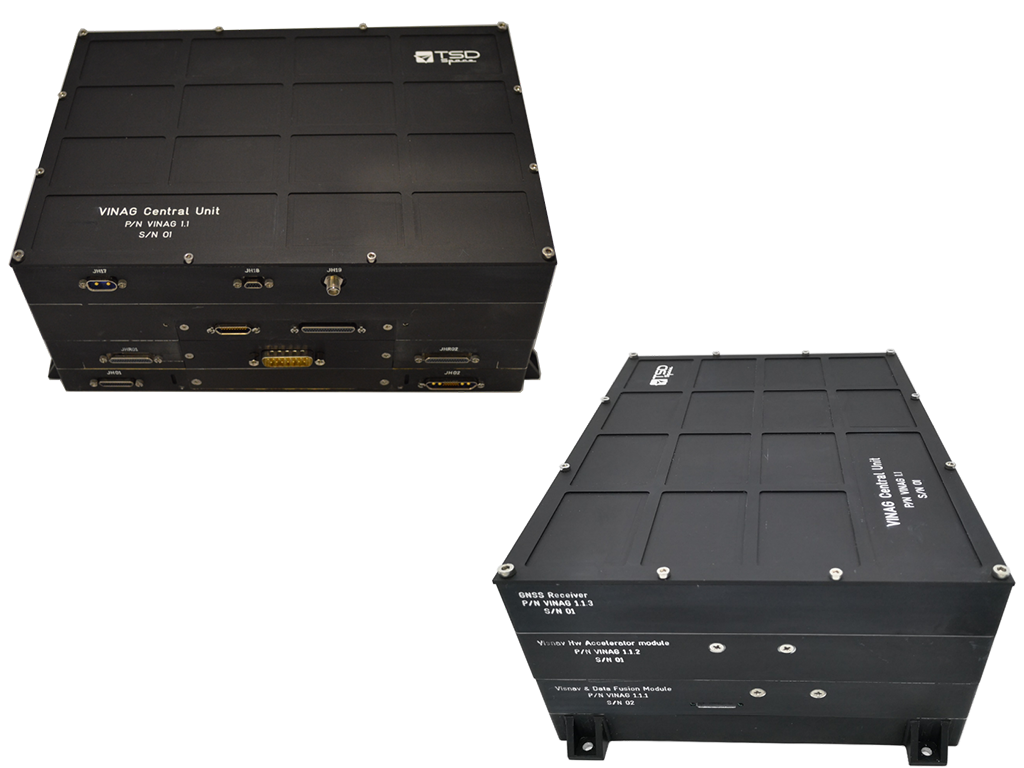
Fully redundant LEON3 OBC
The OBC (On Board Computer) is a general purpose fully redundant space computing platform based on LEON3 FT processor and represents the core element of an OBDH. It provides a set of standard services for space platforms:
- Computational resources for the flight application software
- CCSDS TM packetization and TC decoding
- Communication with the Payload by means of different interfaces (SpaceWire, CAN Bus, RS-422 serial asynchronous I/F)
- Time management
Furthermore the OBC can host a mezzanine board that accommodates additional controllers & interfaces towards the TM/TC Transmitter and Receiver, the AOCS and the GNC subsystems and provides an FPGA-based hardware accelerator for intensive data processing algorithms.
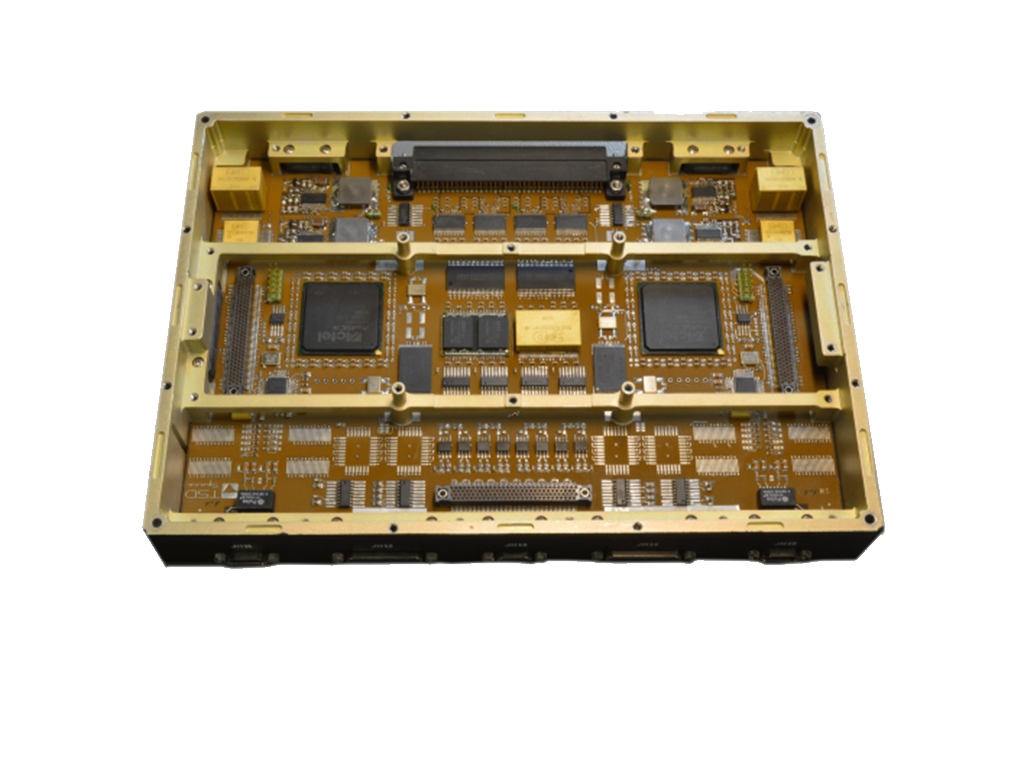
Digital Heater Controller
The digital heater controller is a module dedicated to the closed loop control of heaters for thermal control on board Spacecraft. The module receives the desired temperature set-point from spacecraft OBDH and drives the heater so to reach and to maintain the desired temperature. It is very compact and it is conceived to be located close to the heater so to drive it in a temperature controlled way. Thanks to this electronic module, the heater can be seen externally as a digital devices and in particular as a “Digital Heater”.
The digital heater controller has been designed so to be connected with a multi-drop bus topology to a power and data buses, thus allowing the implementation of a “distributed” thermal control system, characterized by a reduced mass and volume of the harness, w.r.t. the traditional centralized thermal control systems on board Spacecraft.
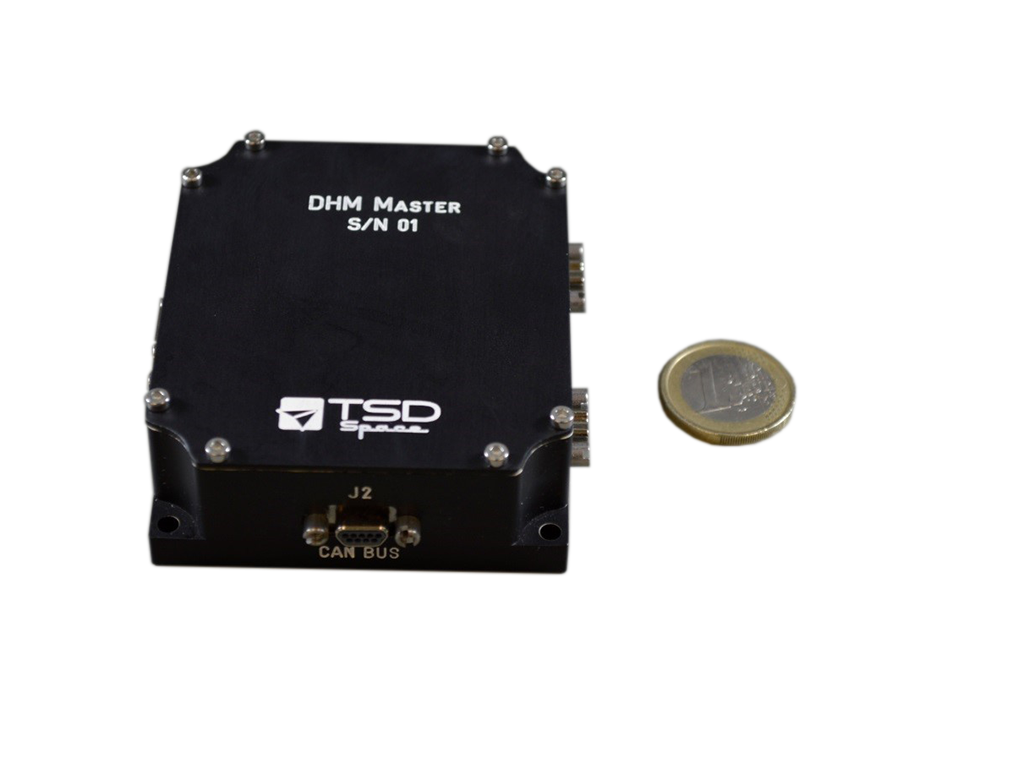
Attitude Control System I/F and Housekeeping Boards for Satellite Platform Data System
TSD developed Attitude Control System I/F and Housekeeping Boards for Earth Observation Satellites and in particular for Sar-Lupe satellite constellation and for ARGO NPSO:
- Fully radiation hardned design
- Digital section entirely based on FPGA
- Redundant MIL-STD 1553
- 98 analog signals (temperatures, currents, voltages) Conditioning and Multiplexing
- 4 analog outputs
- 12 bit A/D and D/A
- 5 asynchronous serial I/Fs
- 16 I/O bi-level signal
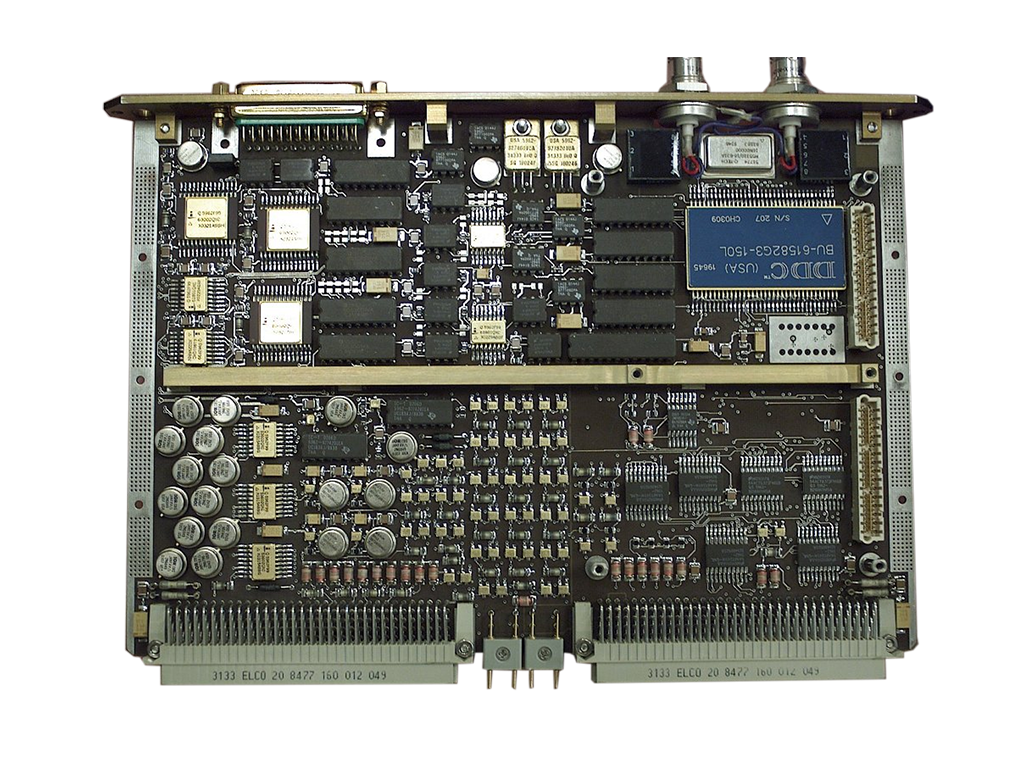
TM/TC CCSDS Encoder& Decoder Boards for Satellite Platform Data System
The Telemetry & Telecommand (TM&TC) Module is a redundant module that is in charge of the TM/TC management according to CCSDS standard. It is composed by two sections (main & redundant), each based on two FPGAs and related power supply circuits; the formed dedicated to the TC and the latter to the TM.
Two sections (main & redundant) are connected to the two OBCs and the two TT&C RF subsystems, adopting a cross-strapping configuration and implement respectively the TM encoding and encryption and TC decoding and authentication. The telecommand circuitry is also able to receive HPTC (High Priority Telecommands) from Ground and in case of fault to transfer proper HW signals to the Reconfiguration Module (if present) or directly to the main Platform avionic subsystems, so to reconfigure the faulty item.
For reliability reasons, two telecommands related circuitries always operates in hot sparing, while two TM related circuitries in cold sparing. The TM&TC Module is a TSD proprietary design which is an evolution of the already developed boards for the ARGO NPSO satellite (EM tested successfully) and the Unmanned Space Vehicle (2 Flight units successfully flown) programs.
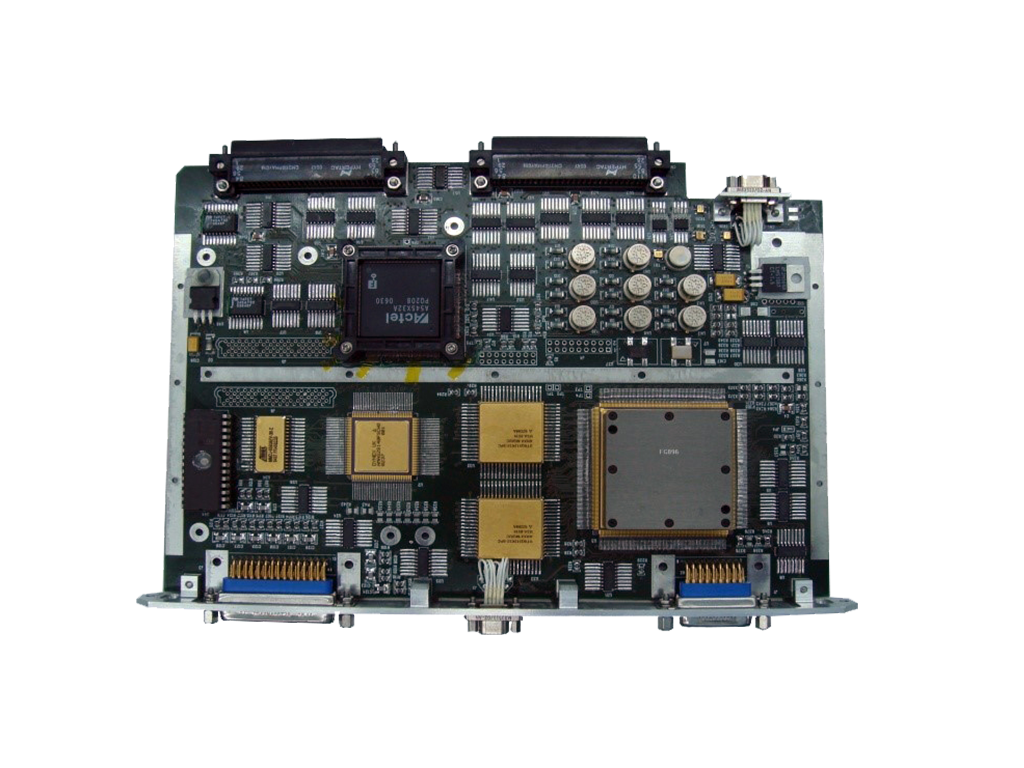
SpaceWire Router & Mux/Demux
TSD developed SpaceWire Router & Mux/Demux for the ARGO NPSO satellite and the ARGO multi-camera Star Tracker System.
